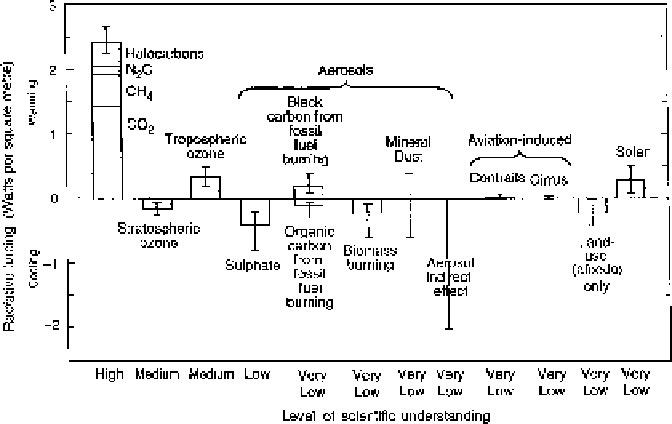Geoscience Reference
In-Depth Information
Figure 10.1 The global
mean radiative forcing of the
climate system for the year
2000, relative to 1750. (See
IPCC
2001
for details)
investigating multiple scenarios to establish a range of responses. A good
example is SPARC, which concentrates on interactions between radiation,
chemistry, and dynamics in the stratosphere.
10.2.2 Patterns of climate change over time
Chapter
6
provides an indication of climate variations over geological time,
and more recently during the Holocene, demonstrating the value of good
quality proxy data. A complete understanding of the patterns of climate change
requires a full investigation of climate transition periods over various time
scales, and definitions of the impacts of long-term and more abrupt variations.
The research associated with PAGES is dedicated toward this goal. The
periods of extreme climate, drought and flood, cold and heat, and what causes
them, can then be better explained and predicted. On a short-term scale,
understanding teleconnections associated with oscillations, such as ENSO,
NAO, PDO, and QBO (see Chapters
2
and
3
), and atmospheric impacts in
different part of the globe, are critical. While the impacts that occur are
apparent, establishing why and how they are created requires considerably
more research.
10.2.3 Feedbacks
Feedbacks are changes that occur in the climate system when some compo-
nent of that system varies. Examples of such components include water vapor,

Search WWH ::

Custom Search